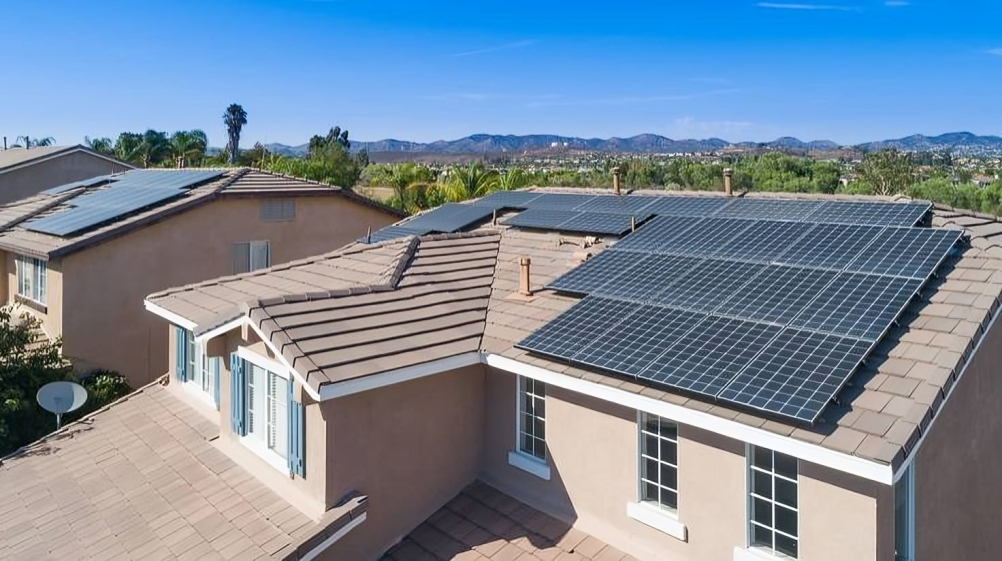Why Go Solar?
Understanding Solar Energy & How It Works
Solar energy unlocks a cleaner, more cost-effective future and with solar panels, you can harness the sun’s unlimited power to run your home or business efficiently!
Solar energy has never been more accessible. With continuous advancements in technology and declining costs, an increasing number of homeowners and businesses are turning to solar. In fact, the International Energy Agency reports that solar is now the fastest-growing power source globally, surpassing all other forms of energy.
Switching to solar helps lower your electricity costs, boost your property’s value, and contribute to a more sustainable planet. Ready to tap into the power of the sun? Get in touch with us today and find out how easy it is to transition to clean, renewable energy!

How Do Solar Panels Work?
When sunlight hits a solar cell, photons dislodge electrons from their atoms. Connecting conductors to both sides of the cell creates an electrical circuit. As the freed electrons flow through this circuit, they produce electricity. A single panel is made up of many cells, and several panels connected together form a solar array. The larger the array, the more power it can produce.
What are North Jersey Solar Panels Made of?
Photovoltaic (PV) solar panels consist of numerous individual solar cells. These cells are made from silicon, similar to the material used in semiconductors. Each cell has a positive and a negative layer that work together to create an electric field much like the structure of a battery.
How Do Solar Panels Generate Solar Energy?
Photovoltaic (PV) solar panels in North Jersey produce direct current (DC) electricity. In a DC circuit, electrons flow in a single direction. For example, when a battery powers a light bulb, electrons travel from the battery’s negative terminal, pass through the bulb, and return to the positive terminal.
Alternating current (AC), on the other hand, works differently. In AC, electrons reverse direction periodically similar to the motion of a car engine’s piston. AC electricity is produced when a wire coil spins near a magnet, a process powered by various energy sources like fossil fuels, hydro, nuclear, wind, or solar.
The U.S. electrical grid uses AC because it’s more cost-effective to transmit over long distances. But since solar panels generate DC electricity, we need a way to convert it. That’s where inverters come in—they transform DC into AC so it can be used by homes and sent into the grid.

What is Solar Energy and How Do Solar Panels Work?
A solar inverter converts the DC electricity generated by the solar array into usable AC electricity. Often called the brain of the system, the inverter does more than just convert power it also offers ground fault protection and monitors key system data. This includes voltage and current levels for both AC and DC circuits, real-time energy production in North Jersey, and maximum power point tracking to ensure optimal performance.
For years, central inverters were the standard in solar systems. However, the rise of micro-inverters marked a major advancement in photovoltaic technology. Unlike central inverters that manage the performance of an entire system, micro-inverters work on a panel-by-panel basis, allowing each solar panel to operate at its highest efficiency. With a central inverter, a single shaded or dirty panel can reduce the output of the entire array. Micro-inverters like those used in SunPower’s Equinox home solar system eliminate this issue, ensuring that even if one panel underperforms, the rest of the system continues to operate at peak levels.
How Does a Solar Panel System Work?
Here’s how a typical home solar installation works: sunlight strikes the solar panels mounted on your roof, and they convert that light into direct current (DC) electricity. This DC power flows to an inverter, which transforms it into alternating current (AC) the type of electricity your home uses. It’s a clean, straightforward process that’s becoming more efficient and cost-effective every day.
But what if you’re not home to use the electricity your solar panels produce during the day? And what happens at night when your system isn’t actively generating power? No need to worry that’s where a program called “net metering” comes in, allowing you to still make the most of your solar energy.
During peak sunlight hours, a standard grid-connected solar system often generates more electricity than a household can use. This surplus energy is sent back into the power grid, where it can be used by others.

Homeowners earn credits for the extra energy their solar system sends to the grid, which can be used later when solar production is low like at night or during cloudy weather. A net meter keeps track of the energy you supply to the grid versus what you use from it. Learn more about how net metering works here.
